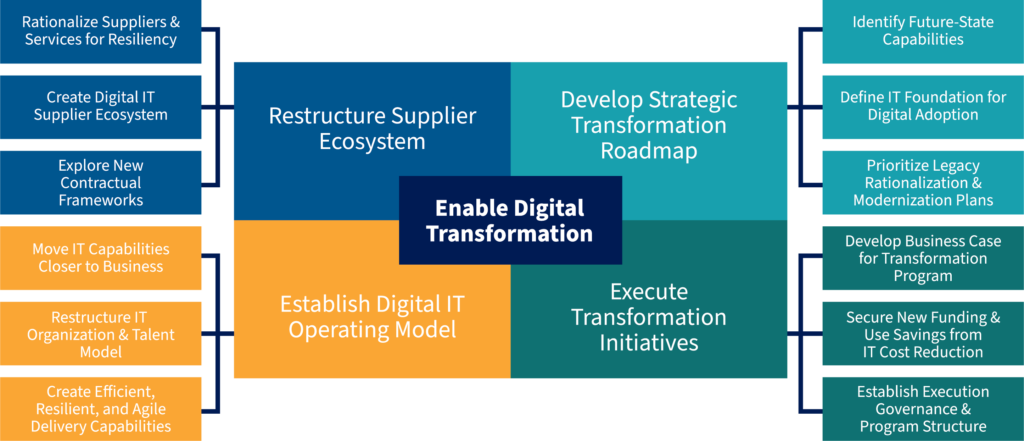A Coordinated Approach to Digital Transformation
The urgency behind digital transformation has dramatically increased over the past year. The market is rewarding those organizations who have been most nimble in their implementation of digital capabilities. The gap between winners and losers has widened as a result.
With an increasingly optimistic view of the future business environment and economic activity, CIOs are looking to accelerate digital transformation initiatives both as a means to sustain their lead over competitors who failed to invest in transformation and to close the gap with other competitors who invested more aggressively.
Recognizing that many changes were implemented in a reactive and haphazard manner to respond to prevailing conditions, CIOs should now take a more expansive and coordinated approach to digital transformation that ensures that their organization plans, executes, delivers, and sustains the benefits of such transformation. Addressing four key elements and related elements is necessary to ensure success with digital transformation:
- Develop a strategic transformation roadmap that identifies future-state capabilities, prioritizes legacy modernization plans, and defines foundational changes needed for digital adoption
- Execute transformation initiatives by developing the business case for change, securing or re-purposing funds and establishing a robust governance model to support implementation
- Establish a digital IT operating model that provides an efficient, resilient, and agile delivery capability and places needed capabilities within business units to maximize effectiveness
- Restructure supplier ecosystem for resiliency and the ability to advance the adoption of emerging technologies for business benefit

